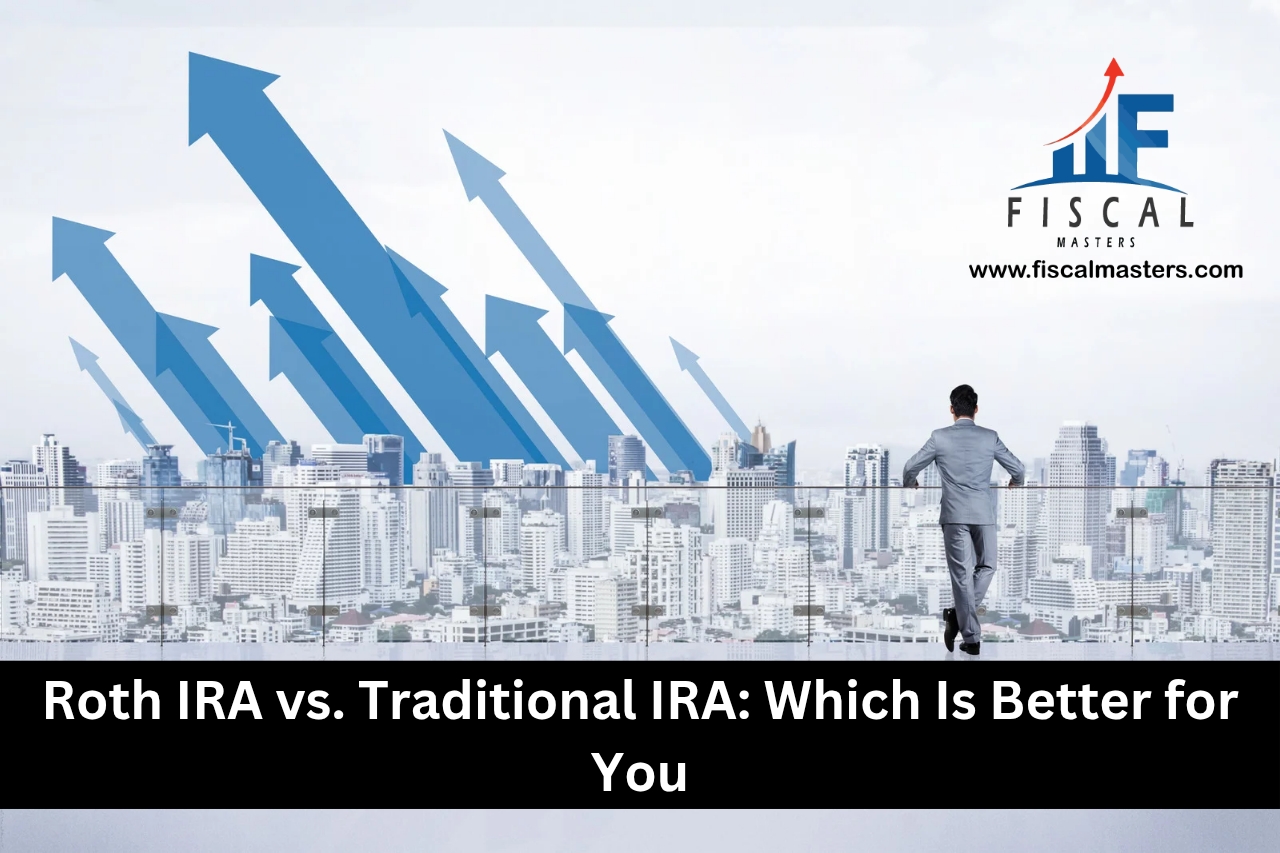The financial decision to plan for retirement stands among the most crucial ones you will ever make. Selecting the right retirement option becomes complex because the market provides numerous options. The retirement account choices mainly include the Traditional IRA and the Roth IRA.
These two retirement plans differ in taxation structure and withdrawal principles even though they provide separate benefits for retirement savings. Your decision requires an informed choice because you need to understand the essential differences between Roth IRAs and Traditional IRAs.
Check out: 7 Best Investment Opportunities for 2025: Where to Grow Your Wealth This Year
What would you choose: retirement withdrawals tax-free or getting an instant tax benefit from your contributions at present? People should select retirement accounts according to their financial needs since each account type has unique objectives but they have distinct differences based on personal earnings levels and tax rates and planned retirement activities.
People interested in Roth or Traditional IRAs need to understand the detailed comparison between these two accounts considering their benefits and drawbacks as well as their suitability across different investor groups.
Learn more baout: Investment Types: Things You Should and Should Not Do When Investing Your Money
This guide shows you how to pick the retirement account that will match your extended financial targets best whether you have begun saving or you need to improve your retirement approach.

What is Roth IRA?
A Roth IRA is a form of a retirement account that allows individuals to contribute their after tax income. Unlike a Traditional IRA, a Roth IRA does not allow immediate tax deduction. But the biggest benefit is that distributions from retirement accounts such as you would take from those accounts in retirement, including earnings, are completely tax free provided certain requirements are met.
Have a look at: Ethical Investing Explained: How to Align Your Investment Portfolio with Your Values
Key Features of Roth IRA
- The rules allow tax-free withdrawals for your Roth IRA funds starting at age 59 1⁄2 after maintaining the account for a minimum five years at age 59 1⁄2.
- Roth IRA accounts exempt you from the requirement of taking Required Minimum Distributions no matter your age.
- Each person only gets the chance to contribute $7,000 annually to their Roth IRA with older individuals allowed a maximum of $8,000.
- People who make high incomes cannot directly fund their Roth IRAs. In 2024 the Roth IRA contribution rules state single filers are ineligible for direct contributions when their modified adjusted gross income exceeds $161,000.
Learn more about: Top 5 Common Investment Mistakes for Beginners and How to Avoid Them
Who Should you Choose a Roth IRA?
People who meet these conditions should consider a Roth IRA account.
- Your retirement tax bracket needs to be higher than your current working bracket.
- Want tax-free withdrawals in retirement.
- Roth IRA works best for people who choose to avoid required minimum distributions after reaching a specific age threshold.
- People who begin working and earn a lower salary right now should consider opening a Roth IRA.
What is a Traditional IRA?
Another type of retirement account called a Traditional IRA lets you contribute pre tax income. It means each year you can take out a deduction from taxes immediately for your contributions, thus lowering your taxable income. But when you take funds out in retirement, you owe tax on contributions and on earnings.
Check out: Roth IRA vs. Traditional IRA
Key Features of a Traditional IRA
- You can receive tax deductions for your contributions if your income matches particular conditions or if you do not have access to employer-based retirement plans.
- Taxable withdrawals serve as regular income for retirement account holders who make withdrawals.
- Traditional IRA account holders need to take Required Minimum Distributions starting at age 73 but Roth IRA owners do not face this requirement.
- Contribution Limits: The same limits as a Roth IRA apply—$7,000 per year ($8,000 if 50 or older).
Check out: 10 Tips to Choose the Right Type of Investment Vehicle to Maximize Returns – January 2024
Who Should Choose a Traditional IRA?
Individuals who should consider a Traditional IRA include those who:
- Those who are in a lower tax bracket in retirement.
- Those who want an immediate tax break on their contributions.
- Those who do not meet the income restrictions to qualify for a Roth IRA.
- Those who favor payment of taxes later in retirement.

Key differences between Roth and traditional IRA
The main difference between a Roth and a Traditional IRA is in tax treatment, withdrawal rules, and eligibility requirements. The greatest difference, however, is how contributions and withdrawals are taxed. Contributions are made to a Roth IRA after tax income and with no immediate tax deduction. If certain conditions are met, however, earnings withdrawals in retirement are completely tax free.
Know more about: What is Compound Interest- How to Reap the Benefits of this Investment Vehicle
On the other hand, a Traditional IRA allows contributions that can be reduced by tax (if qualified), and is reducing taxable income in the current year. Nevertheless, withdrawals from retirement are taxed as ordinary income.
The second important difference is RMDs that are required. Traditional IRA account holders must now start withdrawing at age 73; this can affect how much retirement income is available. For example, a Roth IRA has no RMDs, so the funds can stay in the account indefinitely, thus also making it a good option for estate planning or ongoing tax-free growth.
Both retirement accounts operate under different qualification criteria for contributions. High earners must understand that entry to Roth IRAs depends on meeting income requirements.
Have a look at: What is Dividend Stock and How It Works?
The 2024 eligibility rules for contributing to Roth IRAs include that single filers without modified adjusted gross income below $161,000 can participate. Since Traditional IRA distributions have no limits on annual income for contributions individuals at any earnings level can access the account benefit.
A person should base their decision on whether to choose a Roth IRA versus a Traditional IRA on their present tax bracket situation and their predicted tax bracket at retirement.
Know more about: Why Zero-Based Budgeting Works for Smart Spending
People with anticipation of being taxed at higher rates during retirement should select a Roth IRA because its distributions stay tax-free. People who anticipate their tax bracket to decrease in retirement will gain more from Traditional IRAs because the plan offers upfront tax deductions which they can pay later with reduced taxation rates.
Pros and Cons of Roth IRA
Following are the pros and cons of Roth IRA.
Pros
- Tax-free withdrawals in retirement.
- No RMDs—greater flexibility in retirement planning.
- Good for young professionals in a lower tax bracket.
Cons
- Contributions are not tax-deductible.
- Income limits restrict eligibility.
- The product requires larger upfront financial costs.
Have a look at: Paid-In Capital vs. Earned Capital: Key Differences and Their Importance
Pros and Cons of Traditional IRA
Following are the pros and cons of Traditional IRA
Pros
- Tax advantages occur immediately which results in decreased taxable income for individuals.
- The contribution rules do not apply income thresholds.
- The IRS retirement tax advantage makes this retirement savings vehicle suitable for people anticipated to receive lower tax rates in retirement.
Cons
- Retirement withdrawals are subject to malicious tax procedures at the ordinary income level.
- The retirement tax provision of RMDs demands age-73 recipients to make mandatory withdrawals.
- Less flexibility for estate planning.

How to Choose Between a Roth IRA and a Traditional IRA?
In order to make a decision between Roth and Traditional IRAs you should weigh the following criteria:
Your expected future and current tax brackets will determine choosing between a Roth and Traditional IRA because those in higher tax brackets in the future should pick Roth. Using a Traditional IRA becomes your best option since you expect to face lower tax rates during retirement.
Check out: Best Money Making Apps
Roth IRA proves most advantageous to people who are young along with having lower incomes but Traditional IRA is better suited for people near retirement.
Roth IRAs provide the advantage of allowing you to avoid required withdrawals during retirement.
You should open a Traditional IRA when you require immediate tax benefits but prefer future tax benefits then consider a Roth IRA. One should decide on a Roth IRA over a Traditional IRA to obtain tax-free income in the future.
Check out: ESG Investing: Making Money while Making a Difference
Conclusion
Selecting between a Roth IRA and a Traditional IRA depends on how you plan to use your savings and the present and future tax implications along with vision for retirement funding. Roth and Traditional IRAs are retirement savings tools which offer separate advantages for tax management purposes despite their distinct characteristics.
A Roth IRA should be your selection if you want tax-free retirement income while preventing required minimum distributions (RMDs). Traditional IRAs offer better advantages when you aim to lower present day income taxes yet push taxes into retirement. The evaluation of both your present financial standing and projected tax rates after retirement will lead to selecting the appropriate retirement savings method.
Read more about: Ethical Investing Explained: How to Align Your Investment Portfolio with Your Values
A Roth IRA serves investors best because it lacks both required minimum distributions and it allows tax-free investment growth over extended retirement years and enables tax-free inheritance for future family members. Traditional IRA investments provide their participants a tax benefit through reduced taxable income during their contribution year.
People prefer Roth IRAs as a tax-relief tool since they need immediate tax benefits but anticipate lower tax rates when they retire. Your first and principal duty should consist of initiating early savings which you should proceed to sustain by regular contributions. Traditional and Roth IRAs give investors brilliant chances to create wealth which protects their retirement future from financial stress.
